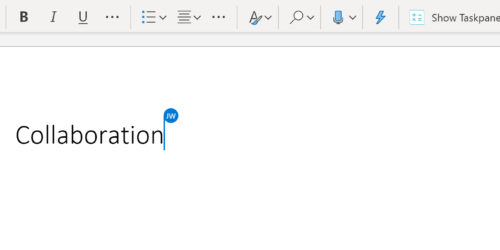When Students Are Absent from a Group Work Assignment

Research on student group work shows that identifying group work issues early and giving timely support help to ensure that students will meet the learning outcomes in your course (Burdett, 2007). This is especially true when students are absent from their assigned work. As Stucky describes in their study on the effects of faculty who contact students due to absence,
“the attention that instructors pay to attendance creates incentives that maximize the likelihood that students will attend, and contacting absent students enhances student beliefs that the instructor is concerned about their well-being and success.”
(Stucky, 2008, p.68)
Steps to Take
Each situation with an absent student in group work will have different factors that shape how you might respond. However, here are some general steps that you may consider taking to address the issue.
1. Review the Program Handbook, Course Outline, group assignment instructions, and rubric.
Answers to the questions can help with your decision-making when a student is absent from group work.
- Are there program policies related to how to deal with student absence in group work?
- If yes, be sure to follow and communicate about the policy to students.
- Are the course learning outcomes about group work? Are students required to demonstrate knowledge, skills, and attitudes about working in a team to achieve the outcomes of the course?
- If yes, students are required to participate in group work for passing grades on the assignment.
- Does the assignment and its rubric evaluate students based the processes of group work? Does the rubric evaluate individual contributions to the team?
- If yes, it will be necessary to obtain information and/or documentation on students’ individual contributions to group work.
- Does the assignment have a assignment or rubric rider that explains that you reserve the right to give individual students different grades based on inequitable or non-participation in group work?
- If yes, then remind students orally in class about this rider.
2. Send an email message to the absent student with a request to meet.
Here are some points of information that you can share in the email and/or meeting:
- Explain the goals of the assignment and the requirements to work as a group.
- Remind the student of the importance of communicating with their group if barriers prevent the student from attending meetings or completing their assigned roles or tasks.
- Ask what you can do to help support the student to get re-involved with the group.
- Provide a list of College student services to encourage the student to seek support for any academic or personal issue(s) they may be facing.
Note: Do not ask for medical information from the student. If the student has a temporary disability due to illness, encourage the student to contact Accessibility Services for an intake appointment.
3. Send an email message to all group members, encouraging them to meet ASAP.
Here are some points of information you may wish to mention in your message:
- Inform the group that you are aware a team member has been absent and that the group may be behind schedule.
- Explain that challenges in group work are common, but with communication and commitment to the team they can be overcome.
- Suggest the group meet as soon as possible to review relevant documents and create a goal-oriented plan and timeline for assignment completion.
- Encourage the team to speak speak directly, but respectfully, to each other about any issues. Avoid speaking negatively or making assumptions about group members, and focus on the task at hand.
- Agree to revise or set new group agreements about work in writing.
- Invite the team to be prepared to make contingency plans in case a group member is absent.
- Encourage group members to document individual contributions to group work.
You may wish to offer to be present at the group meeting. If you attend the meeting, model a positive, reassuring tone with a goal-oriented focus to help students plan a way forward for their assignment.
4. In your next class, provide everyone with reminders and supports for group work.
Here are some examples of what you can share and do in class:
- Explain the importance of commitment to group work, even in the face of challenges, for the benefit of all group members.
- Review the group contracts and/or project timelines teams developed together.
- To facilitate collaboration and communication, encourage the use of digital collaboration spaces you have provided (such as eConestoga Groups, MS Teams channels, or OneDrive folders).
- Recommend tools (such as the MS Planner) to support collaborative work
- Review a list of “effective group work habits,” which can include note-taking during group meetings and role allocation to track individual student contributions.
- Remind students to check Conestoga email daily and respond promptly to group members.
If you teach a live class, make time for break-out group work (supported by you) during class. Monitor the groups actively to note absences and observe what might be going on in groups, such as personality conflicts or dominating students (Hishon, n.d.).
If there is time, run a short class activity that encourages students to share their own strategies for dealing with unexpected absences. Or, provide a short team-building to build in-group rapport and trust.
5. Check-in with all groups if there is time before the assignment is due.
Consider providing student groups with a short individual survey or a group survey to get feedback on how the groups are progressing. Follow up with any students who report a concern.
6. Check back with the group and the absent student, and make final decisions.
In your check-back message or follow-up meeting with the group, remind the students that they are responsible for demonstrating all required learning outcomes for the assignment. Encourage the group to submit the best work they can produce together.
Inform the group of any fair and appropriate adjustments to the assignment, given the absent group member; for example, if the group presentation is 20 minutes long with 4 members, allow for a 15-minute presentation with 3 members. However, the groups must still be evaluated on their demonstration of learning related to the course outcomes.
Make multiple attempts to reach out to the absent student, noting in your message any relevant class progress or absence data. If it is appropriate and warranted, consider how the student might complete equivalent assignment work on their own so that they have an opportunity to demonstrate their progress towards course learning outcomes. (Note that students should not receive passing grades for learning outcomes directly related to the process of working in groups).
7. Document your efforts to support the group with an absent student.
Note that in cases in where student absence from group work is reported due to harassment, discrimination, bullying, or sex or gender-based violence, faculty are required to act immediately by following the protocols listed on the Academic Policies and Procedures page. In such a case, reassign the student immediately to another group.
No Reply from the Student
If you receive no reply from the absent student after multiple attempts, you may wish to take the following steps:
- Inform the student by email of the consequences of their absence from group work (e.g., loss of marks on the assignment, status in the course).
- Refer the student to a Student Success Advisor, who will reach out to the student to help them to navigate the College’s support services for students. (Note that SSAs do not assist students directly with managing group work issues.)
- Submit a CARE Report to the College’s Care Team, especially if you have an immediate concern about the student’s well-being or you notice a dramatic change in their behaviour.
- If your area has a Program Manager, you may want to notify the student’s Program Manager and report the student’s non-responses.
Challenges with group work are common, but success is still possible when faculty are “willing to work alongside groups in helping them achieve outcomes that are positive, fair and equitable” (Burdett, 2004, p.55).
Need more help? Contact teachingandlearning@contestogac.ca.
References
Burdett, J. (2007). Degrees of separation – balancing intervention and independence in group work assignments. The Australian Educational Researcher, 34(1), 55-71.
Chang, Y. & Brickman, P. (2018). When group work doesn’t work: Insights from students. CBE Life Sciences Education, 17, 10.1187/cbe.17-09-0199.
Hishon, K. (n.d.). Problem Solving: When Students Don’t Work Well Together. Theatrefolk.
Stucky, T. D. (2008). Investigating whether contacting absent students increases course success. Journal Of The Scholarship Of Teaching And Learning, 8(1), 61-71.



